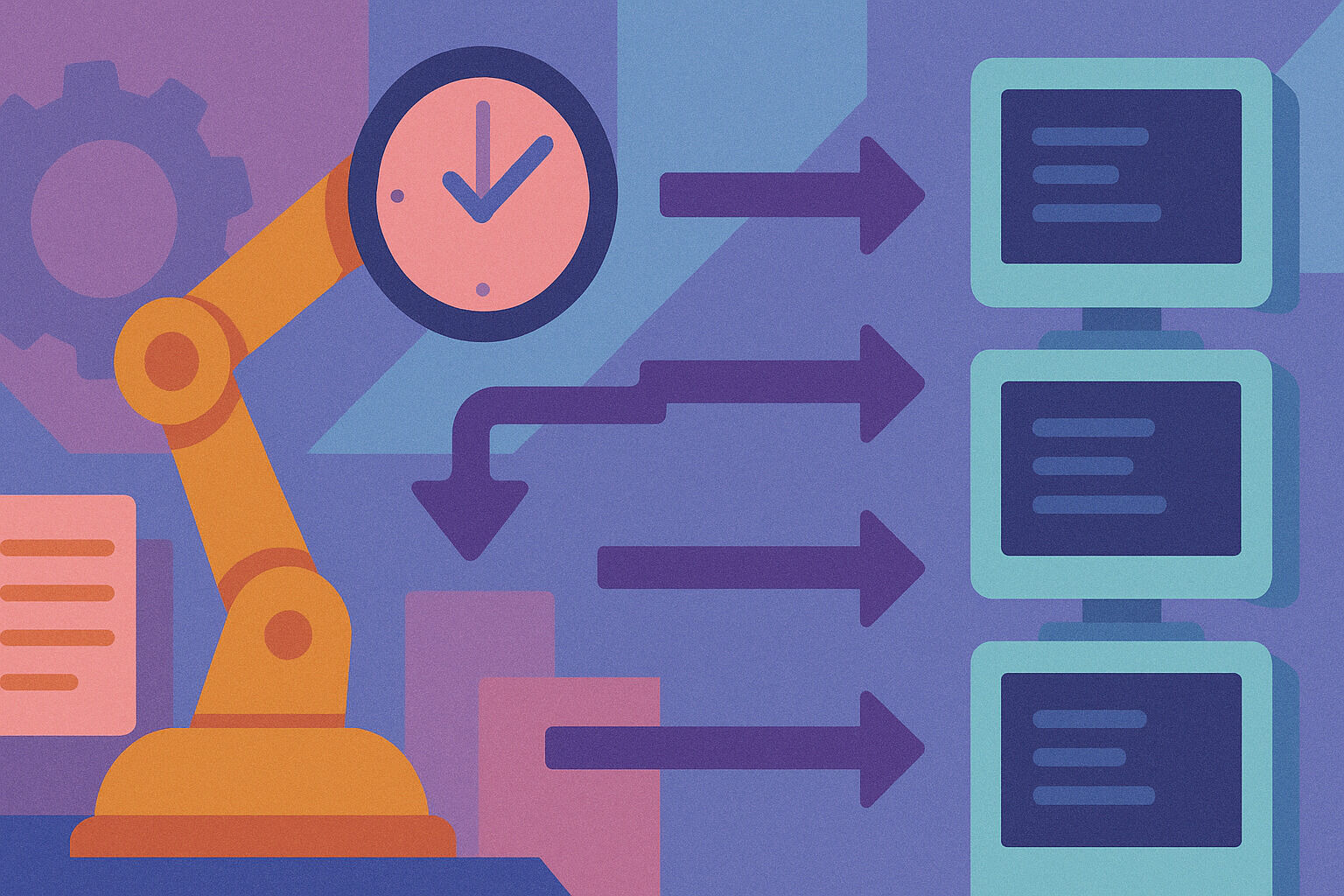Reliable Scheduling for Repetitive Data Tasks
Managing large data jobs week after week can be time-consuming. Whether it’s generating reports, cleaning logs, or running simulations, these repetitive tasks can quickly eat into a team’s schedule. Grid computing offers a way to handle these jobs faster, and when automation is added to the mix, everything becomes smoother and more reliable.
Weekly batch jobs are common in many sectors—finance, healthcare, research, and retail. Automating these tasks on a grid means jobs are set to run at the same time each week, based on the week number, without needing someone to trigger them manually. This frees up time and reduces the risk of forgetting a task or running it late.
With the right tools and setup, even small teams can make big workloads more manageable. Automating batch jobs lets the grid handle everything behind the scenes while teams focus on planning, analysis, or creative work instead of babysitting routine processes.
Understanding What Weekly Batch Jobs Actually Do
Batch jobs are sets of tasks grouped together to run automatically, often without user input. In a weekly setup, these tasks might include backing up data, checking for system updates, compiling logs, or refreshing dashboards. In grid computing, these tasks are broken into smaller parts and shared across many computers.
The main benefit of running batch jobs on a grid is how much faster the process becomes. Instead of a single machine chugging through every step one by one, multiple machines handle different parts all at once. This parallel processing saves time and increases accuracy.
Automating these jobs takes the benefits even further. Once a job is scheduled, it kicks off on its own—no reminders needed. Whether it runs on a Friday night or Sunday morning, the job completes and stores the results where they’re needed, ready for teams to review at the start of the next week.
Saving Time Without Sacrificing Precision
Manually starting weekly jobs may not seem like a big deal at first, but over time it adds up. Someone has to remember to do it, check for errors, and wait around to see if it finishes properly. With automation, those tasks happen on their own and follow a consistent process every time.
This consistency is a big win for data teams and system administrators. Instead of relying on memory or shifting team schedules, jobs are run exactly as planned. That removes human error, which can cause delays or produce incorrect results if a step is skipped.
For example, a retail chain might run a weekly inventory report. By automating this batch job across a grid, they can be sure it runs at the same time every weekend—gathering sales data from hundreds of stores, checking stock levels, and creating a clean summary before Monday morning.
Coordinating Resources Without Overloading the Grid
One challenge with weekly batch jobs is that they often run during peak system use, especially at the start or end of the week. Without planning, they can slow down other operations. Grid computing helps by spreading the work around, and automation ensures jobs are timed to avoid conflicts.
A scheduler can control exactly when and where a job runs. If one part of the grid is busy, the system can shift the batch task to another part with more room. That means regular workloads and special projects don’t fight for space.
A bank, for instance, might schedule fraud checks to run early Sunday morning when customer traffic is lowest. If one server farm is handling other maintenance, the grid can push the batch job to a backup location automatically, completing the job without delay.
Using Job Schedulers to Control Timing and Order
Automation in grid computing relies on job schedulers. These tools define when each job starts, how tasks are divided, and what happens if something goes wrong. Schedulers can also set rules, such as running certain jobs only after others are finished or if specific conditions are met.
A good job scheduler handles dependencies and priorities. For example, a marketing report might depend on fresh customer data from another batch job. The scheduler ensures the data job runs first, and only after it completes successfully does the report job begin.
Schedulers also allow for retries and alerts. If something fails—due to a missing file or network glitch—the job can try again or send a message to a team member. This built-in safety net makes automation more dependable and gives users confidence that the system will handle problems as they arise.
Handling Errors Without Constant Supervision
Errors happen, especially when dealing with large data loads or complex tasks. But automation helps reduce the stress of catching and fixing those mistakes. Most grid systems come with tools that detect problems early and report them clearly.
For example, if a batch job crashes halfway through due to corrupted data, the system doesn’t just stop. It logs what went wrong, skips the broken part if possible, and finishes the rest. In many cases, a smart grid setup will even try to rerun the job using different data or machines.
This kind of hands-off error management makes weekly batch jobs far easier to manage. Teams can review logs or reports the next day instead of sitting up late watching every step. With less supervision needed, people have more time for planning, analysis, and other creative tasks.
Scaling Automation Across Multiple Departments
Once a team automates its weekly batch jobs, it’s common for other departments to ask for the same. That’s because automation brings obvious time savings and reduces the need for late-night or weekend check-ins. With grid computing, scaling is as simple as adding more jobs and assigning them to available machines.
For example, a university’s admissions office might automate weekly data pulls on student applications. Soon after, the finance office might want to automate its fee reports, and the IT team might schedule regular security scans. All of these jobs can run on the same grid.
The flexibility of grid systems means they’re easy to grow without slowing down. As long as machines are available, the system balances the load and keeps every job on track. This makes automation not just a technical tool, but a way to support broader teamwork and planning.
Keeping Weekly Jobs Consistent Week After Week
One of the most valuable parts of automation is its consistency. Once a job is scheduled, it runs the same way every time. That means no skipped steps, no forgotten filters, and no guessing whether the process was followed properly.
This level of trust makes a big difference over time. Reports stay clean, data stays organized, and team members know they’re working from the same reliable source each week. Even when staff changes or teams rotate responsibilities, the jobs keep running like clockwork.
For example, a logistics company might track shipments every Saturday night. If the process is manual, results may vary depending on who’s running it. But with automation, the job completes in the same way each time—tracking deliveries, checking schedules, and producing updated dashboards by Sunday morning.
Choosing the Right Time for Weekly Jobs
Not all weekly batch jobs should run at the same time. Some work best overnight, while others might be fine during regular hours if the grid isn’t too busy. The key is finding a window that avoids heavy use while still delivering results on schedule.
Most teams choose weekend or early-morning slots to run batch tasks. Grid systems help by monitoring usage and suggesting the best windows. Automation tools then apply those preferences to keep the system efficient and free from conflict.
Let’s say a research center runs large simulations every Friday night. To avoid slowdowns, they schedule their weekly reports to run Saturday morning. This gives each task the space it needs without forcing delays or using extra resources.
Making Weekly Batch Automation Work for You
Automating weekly batch jobs in a grid computing system isn’t just about saving time. It’s about working smarter, reducing errors, and making better use of technology. Once set up, these automated jobs provide a steady rhythm that keeps systems running smoothly in the background.
Grid computing adds the power needed to handle large jobs fast, while automation makes sure those jobs happen on time—week after week. Whether you’re managing customer data, simulations, or system updates, this combination helps build a strong and dependable routine.
In the end, automation isn’t about replacing people. It’s about giving teams more time to focus on big-picture thinking while the grid handles the routine work that never stops.



